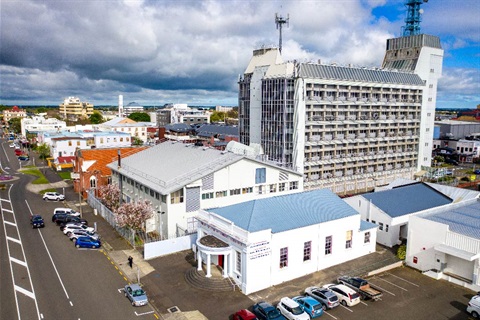
We've updated our Dangerous, Affected, and Insanitary Buildings Policy to replace our existing policy. We consulted on the draft policy, and made a few changes.
This policy helps us ensure that buildings don’t endanger people
Our Dangerous, Affected, and Insanitary Buildings Policy enables a local response to identify and remedy buildings that fit the Building Act 2004 definition of dangerous, affected, and/or insanitary.
This policy ensures that buildings do not endanger the health, safety and wellbeing of the people who use them. This policy does not cover buildings which are simply unused or unkempt. We can legally only act to remedy parts of buildings which meet the definition for dangerous, affected or insanitary under the policy.
The intent of our proposed policy remains the same, but we’re proposing some improvements to:
- better align with current legislative requirements
- improve transparency and consistency on the process we use to identify buildings and the actions we’ll take
- update the policy structure to better reflect our strategic direction.
Changes we considered when we reviewed the policy
The Statement of Proposal proposed the inclusion of ‘affected’ buildings in the policy. The Building Act 2004 was amended to include affected buildings and required local authorities to amend existing policies to take account of this. An ‘affected’ building means that for any building that is near to the building determined ‘dangerous’ or to a ‘dangerous dam’, Council can determine whether it fits the definition of affected and seek to mitigate any risk if it is.
The draft policy also included assessment criteria that we may consider when deciding whether an identified building fits the definition in the Building Act 2004 of dangerous, affected, or insanitary.
We intend to keep a register of the status of dangerous, affected, and/or insanitary buildings in the city. The new provision will also give us the ability to consider whether to list the information for public use on the Land Information Memorandum and/or Property Information Memorandum.
We also proposed updates to:
- the structure of the policy, including the strategic content, purpose, objectives, and principles
- the process we follow when deciding on the action we will take to remedy any concerns.
Statement of Proposal: Draft Dangerous, Affected and Insanitary Buildings Policy(PDF, 440KB)
Consultation on the draft policy
Once consultation closed, elected members considered submissions at the November 2024 meeting of the Strategy and Finance Committee.
Read the Committee report describing the points the submitters made and see the written submissions
Changes to the policy
Along with confirming the changes to the policy proposed in the Statement of Proposal, we’ve also made some other changes in response to submissions. We have:
- Changed the format of the strategic context section to align with the new strategic direction; and
- Added a requirement to notify Te Whatu Ora – Health New Zealand when Council have determined a building to be insanitary.
The Council formally adopted the revised policy on 11 December 2024.
Read the adopted Dangerous, affected, and insanitary building policy